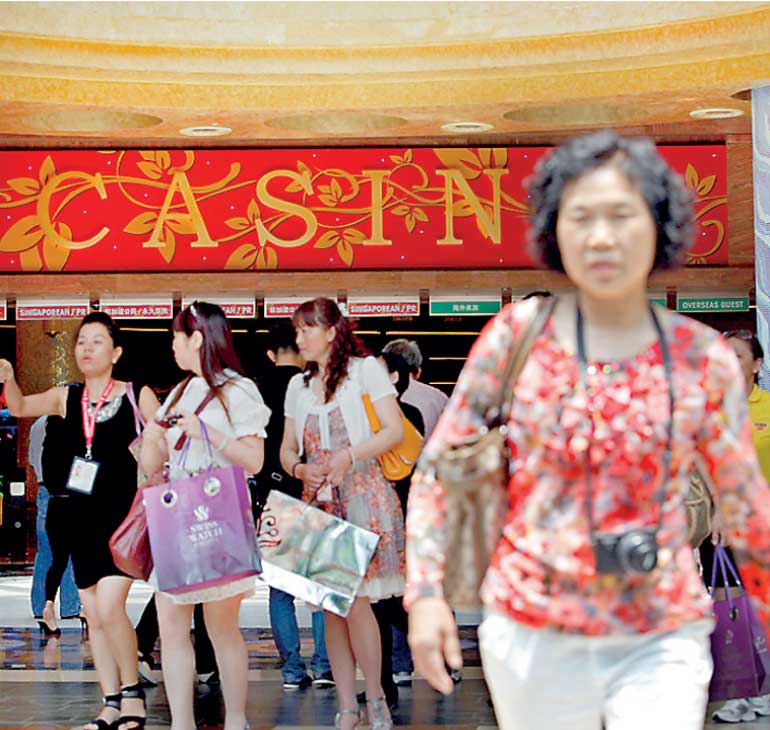Friday Mar 14, 2025
Friday Mar 14, 2025
Wednesday, 8 November 2017 00:00 - - {{hitsCtrl.values.hits}}
 According to data from ForwardKeys, which helps forecast future travel by analysing around 17 million flight booking transactions a day, the boom in Chinese outbound travel is set to keep on going.
According to data from ForwardKeys, which helps forecast future travel by analysing around 17 million flight booking transactions a day, the boom in Chinese outbound travel is set to keep on going.
ForwardKeys Chief Marketing Officer Laurens van den Oever, who was speaking at the World Bridge Tourism conference in London (an event supported by the EU and organised by the European Travel Commission (ETC) and ETOA, the European Tourism Association said: “The Chinese dragon is breathing more hotly than ever. Bookings for outbound travel during Chinese New Year, in February 2018, are currently 40% ahead of where they were at the same time last year.” Looking at a broader period, from the beginning of November until the end of February, bookings are also strongly ahead. The destinations which currently look set to enjoy the most positive growth are: Thailand, where Chinese bookings are currently 47% ahead of where they were at this point last year, Vietnam, 40% ahead, France, 31% ahead, Singapore 28% ahead, Japan 27% ahead and Canada, 23% ahead.
The growth story has been running for a number of years and the long-term trend shows no indication of slowing. According to the Chinese National Tourism Administration (CNTA), outbound travel has grown 270% since 2008 and it is forecast to reach 200 million departures by 2020. Expenditure by Chinese tourists has grown even more strongly. From 2008, it has grown 730%. The management consultancy McKinsey estimates that Chinese spending on luxury goods has been growing at 9% per annum, whereas the average for the rest of the world has been growth at 3% per annum. The strong growth in expenditure by Chinese tourists has not been overlooked by destinations, keen to attract the tourism yuan. Since 2014, over a dozen countries have changed their visa rules to encourage Chinese tourists to come and the impact has been dramatic. In the six months following the relaxation of visa requirements, arrivals in Morocco increased 378%. Other spectacular increases included Moldova, up 253%, Tunisia, up 240%, Serbia up 180%, Israel up 57%, Peru up 56% and Chile up 49%.
Where the Chinese decide to visit can be strongly influenced by geopolitical events. The stationing of the THAAD missile defence system in South Korea so displeased Beijing that Chinese tourists were encouraged to boycott South Korea, and in the year to 1 April, visitor arrivals fell by 67%. This resulted in a boom in visitation to other ‘Asean’ destinations as the Chinese went there instead. Vietnam saw a 50% increase in Chinese tourists, Malaysia 43%, Thailand 11% and Singapore 6%.
The terrorist attack in France in November 2015 so spooked the Chinese, that in the three weeks following it, bookings plunged 72%. At that time Russia and Vietnam were major beneficiaries of the tourism displacement, with bookings for Russia increasing 398% and bookings for Vietnam 58%. In the calendar year to date, Chinese enthusiasm for the USA has fallen noticeably too; visitor arrivals are 10% down. However, its neighbours in North America have benefitted substantially, with arrivals in Canada up 54% and Mexico up 29%. Laurens van den Oever concluded: “At the moment, we are seeing very strong growth in outbound tourism from China and there are no signs of that trend slowing. What we do see however is that Chinese tourists are hyper sensitive to bad news – if a destination’s image becomes tarnished they are swift to go elsewhere.”
Discover Kapruka, the leading online shopping platform in Sri Lanka, where you can conveniently send Gifts and Flowers to your loved ones for any event including Valentine ’s Day. Explore a wide range of popular Shopping Categories on Kapruka, including Toys, Groceries, Electronics, Birthday Cakes, Fruits, Chocolates, Flower Bouquets, Clothing, Watches, Lingerie, Gift Sets and Jewellery. Also if you’re interested in selling with Kapruka, Partner Central by Kapruka is the best solution to start with. Moreover, through Kapruka Global Shop, you can also enjoy the convenience of purchasing products from renowned platforms like Amazon and eBay and have them delivered to Sri Lanka.
Discover Kapruka, the leading online shopping platform in Sri Lanka, where you can conveniently send Gifts and Flowers to your loved ones for any event including Valentine ’s Day. Explore a wide range of popular Shopping Categories on Kapruka, including Toys, Groceries, Electronics, Birthday Cakes, Fruits, Chocolates, Flower Bouquets, Clothing, Watches, Lingerie, Gift Sets and Jewellery. Also if you’re interested in selling with Kapruka, Partner Central by Kapruka is the best solution to start with. Moreover, through Kapruka Global Shop, you can also enjoy the convenience of purchasing products from renowned platforms like Amazon and eBay and have them delivered to Sri Lanka.